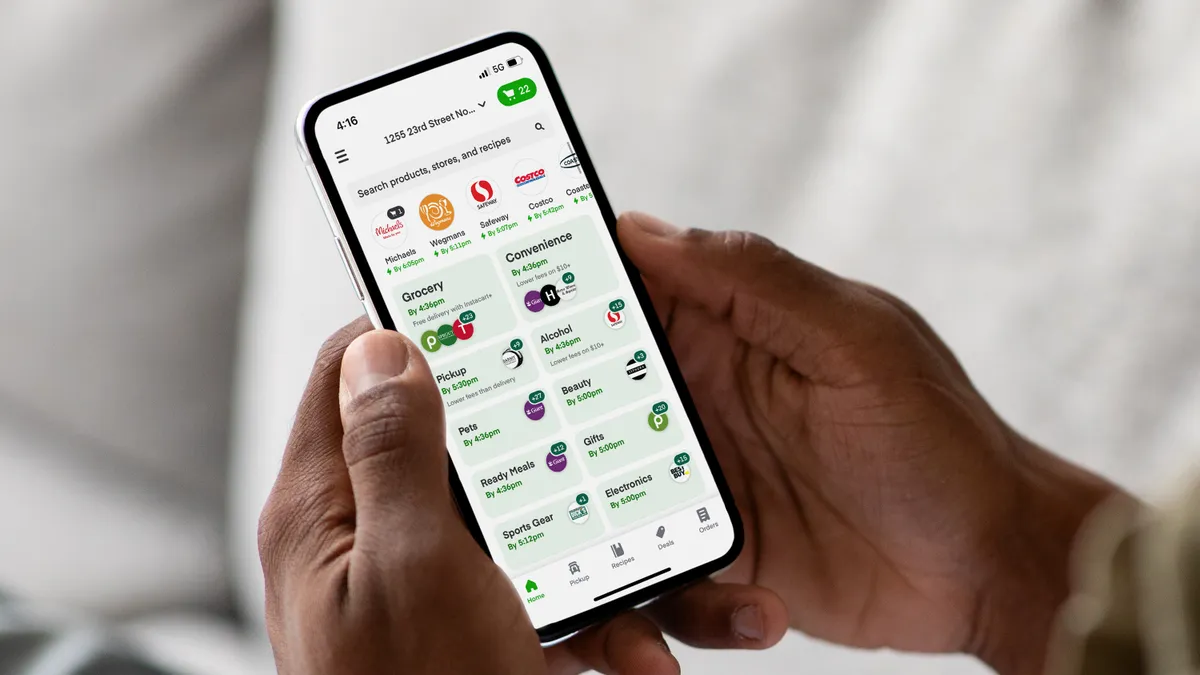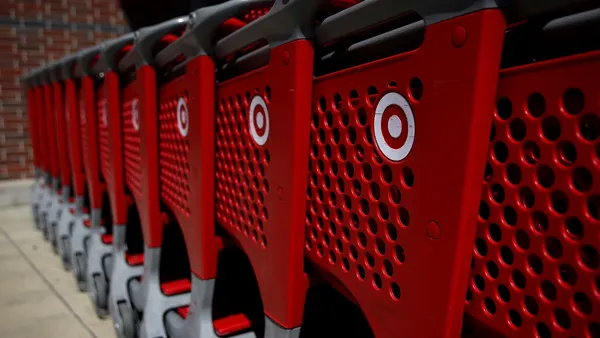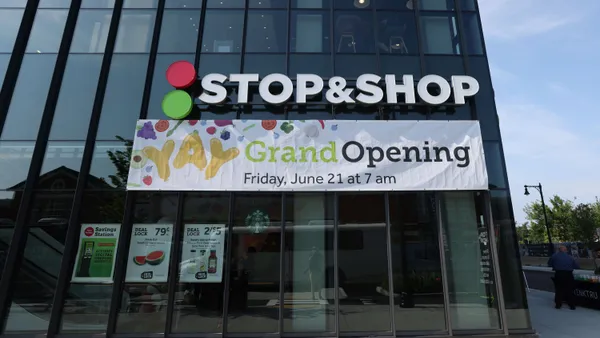Dive Brief:
- U.S. grocery e-commerce sales were off by 10% in November compared with the same month last year, to $7.7 billion, as order frequency dropped and customers curtailed their spending, according to survey data released Tuesday by Brick Meets Click and Mercatus.
- Pickup represented approximately 47% of total online grocery spending last month, about a percentage point less than the share it held in November 2021. By contrast, delivery’s share rose by 4 percentage points on a year-over-year basis, to just under 38%.
- Shoppers are increasingly focusing on costs when deciding where to place online grocery orders — a dynamic that is benefiting mass merchants while putting pressure on traditional food retailers.
Dive Insight:
The decline in online grocery sales recorded in November was driven in part by a 7% overall reduction in the number of households that placed a digital order with a food retailer during the month, statistics provided by Brick Meets Click and Mercatus show.
But while the number of consumers who opted to buy groceries online from a conventional grocer was down, mass merchants like Walmart attracted more digital shoppers, according to the survey, which was conducted Nov. 29-30 and drew responses from 1,749 shoppers.
Meanwhile, conventional grocers saw the number of orders they received decline in November, while mass merchants recorded an increase in order volume during the period, Brick Meets Click and Mercatus said.
The data reflects activity among the online grocery sector’s base of monthly active users, a group that includes ship-to-home customers — whose orders travel via carriers like UPS and FedEx — as well as shoppers who place pickup and delivery orders.
The divergent patterns could reflect the fact that mass merchants tend to charge less to handle digital grocery orders than their counterparts in the traditional grocery sector, according to the research.
“When it comes to shopping online – especially for Delivery or Pickup – cost considerations include more than the price paid for a basket of products,” Brick Meets Click Partner David Bishop said in a statement. “Many customers also evaluate the total cost associated with using the service, which can include special charges, standard fees, and tips.”
In another cautionary sign for conventional grocers, the survey found that the proportion of online grocery shoppers who intend to place a repeat order with the same service within the next 30 days was lower for those retailers than it was for mass merchants.
Grocery pickup orders generated sales of $3.6 billion last month, while delivery sales totaled $2.9 billion.
The ship-to-home online grocery category, which has been declining, accounted for $1.2 billion in sales last month, down from $1.6 billion in November 2021. That translated into about 16% of online grocery sales in November, compared with just above 18% during the same period last year.














